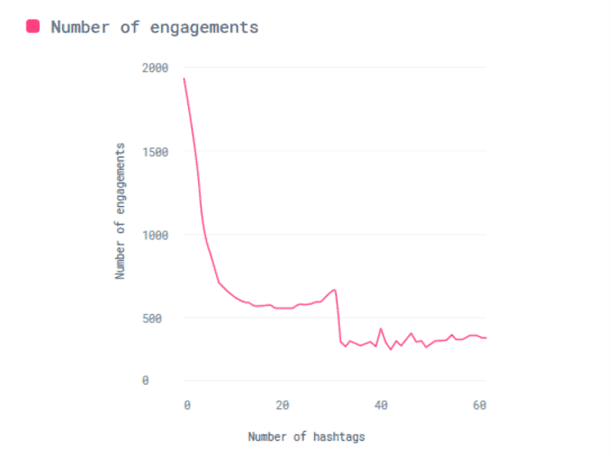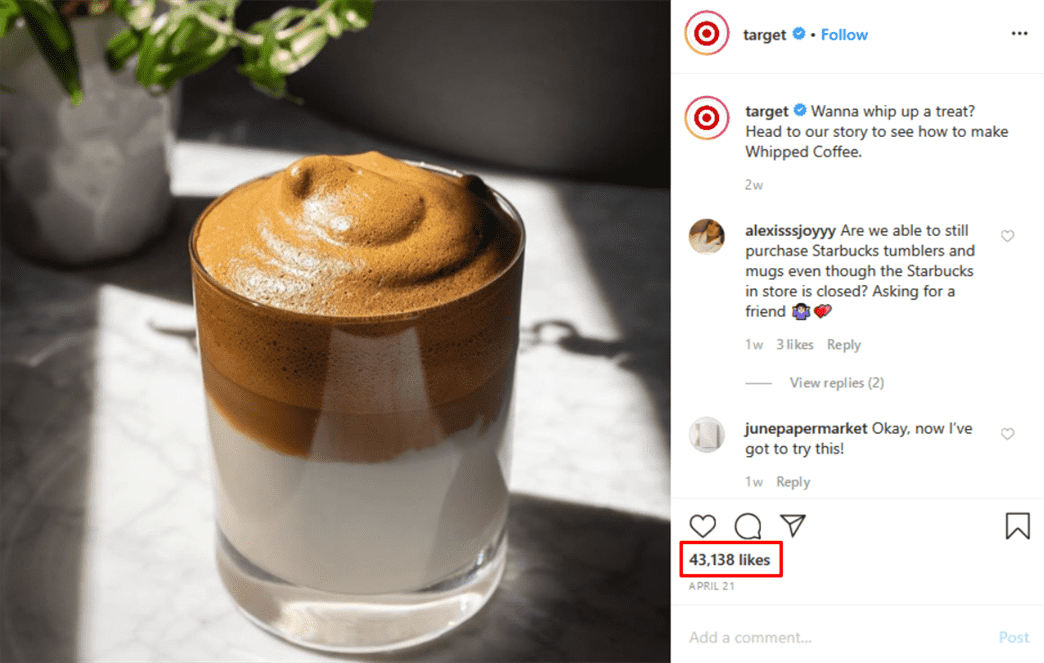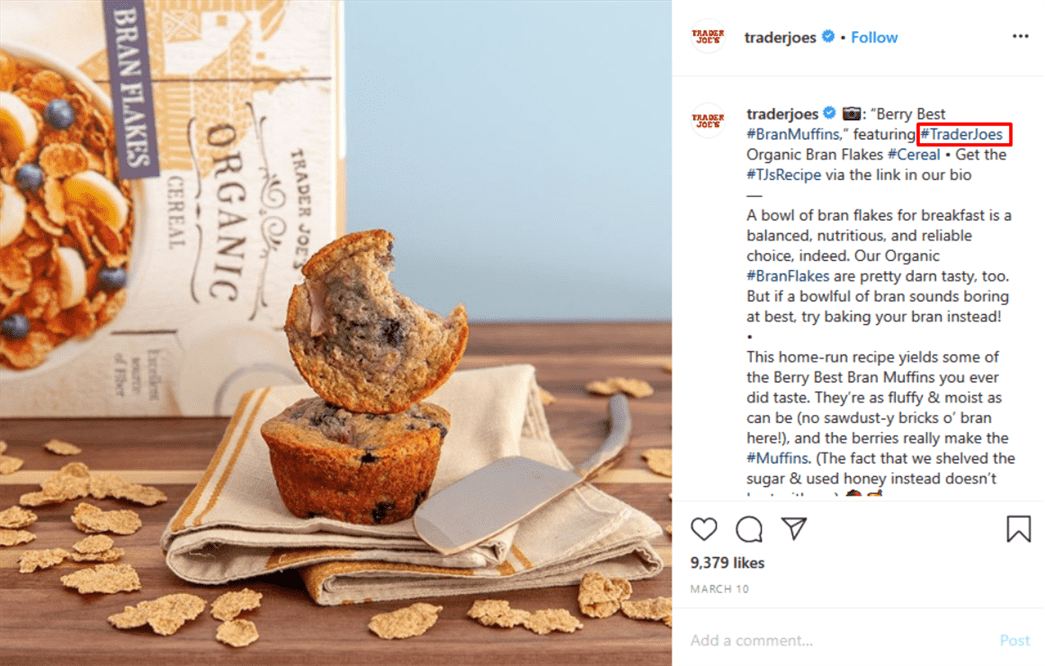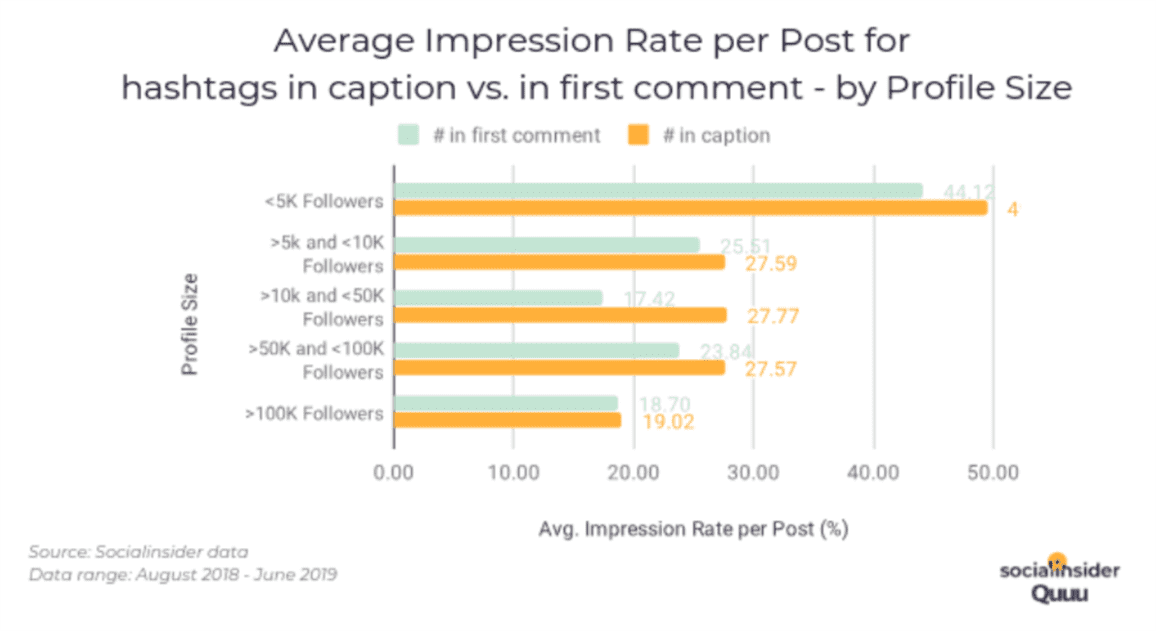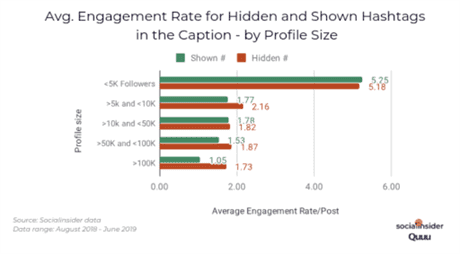Think back to the last big event you attended. Chances are, guests ended up dividing themselves into small clusters based on common interests, existing connections or any number of other factors. After all, this is how humans socialize: We group up.
The Instagram equivalent is facilitated via the humble hashtag. Originally conceived as a way for Twitter users to form groups, the hashtag is now an intrinsic part of Instagram’s functionality. For businesses, this means Instagram tags are anything but irrelevant. By learning how to use hashtags on Instagram, you can amplify organic traffic, connect with users and gain exposure on one of the biggest platforms in the world.
Why You Should Know How to Use Hashtags on Instagram
We can trace the origins of the hashtag—represented by the “#” symbol—all the way back to 2007. On August 23, Chris Messina posted a now-famous tweet destined to go down in internet history:
The idea wasn’t immediately embraced, and in some cases was emphatically rejected. As Messina stated in a 2013 Wall Street Journal interview, Twitter initially told him “these things are for nerds.”
The hashtag’s subsequent rise to prominence would prove otherwise: A 2018 report from Mention found two-thirds (66.7 percent) of Instagram posts contain hashtags.
And yet, the same report also discovered a post’s user engagement doesn’t increase with the number of hashtags used. On the contrary, the more hashtags were used, the more engagement declined:
So what gives? It’s difficult to say for sure, but it likely has something to do with hashtag overuse: According to All Hashtag, the most popular hashtags of all time include generic options like #love, #instagood and #photooftheday, among others.
Bear in mind, some Instagram hashtags (#followme, #TagsForLikes and #likeforlike, to name a few) are not only meaningless but decidedly spammy-sounding to boot.
If you’ve used hashtags like these before, though, there’s no need to feel ashamed. After all, one oft-cited study from TrackMaven concluded Instagram posts with nine hashtags see the most engagement, and it can be challenging to think of so many tags that are both unique and relevant.
As it stands, frequency of use makes for a poor measure of actual value. The hashtags delivering the most engagement are not the ones most frequently used. As shown in Mention’s report, hashtags with the most engagement (#ad, #comedy, #bts, #meme and #perfect make up the top five) aren’t even among the most popular:
The lesson? Hashtags on Instagram are still important for growth and engagement, but only if they’re used properly. The only thing standing between you and hashtag mastery is a lack of the right strategies.
With a curated set of smart tactics, you can use Instagram hashtags to take engagement, traffic and exposure to the next level.
Cater to Your Audience
Every business, organization and publication ever created has some kind of target audience, whether it’s defined by location, interests, education level, age or any combination thereof. Case in point: The digital magazine Bustle caters to millennial women, while most of the New York Times’ readers are men or women between the ages of 35 and 44.
Target audiences drive different companies to advertise in different places. A homeowners insurance provider is unlikely to advertise on TikTok, and a trendy streetwear brand probably won’t advertise on LinkedIn.
The same principle holds true for Instagram tags. Using hashtags your target audience doesn’t care about is a non-starter, and it won’t do you much good to use hashtags too generic to apply to anyone in particular.
Instead, think about things from the perspective of someone who’s a part of your target audience. What kinds of hashtags would they bother to type into Instagram’s search bar? Which of those hashtags are relevant to your Instagram posts? Try to be as specific as possible.
For instance, #jewelry is an incredibly popular hashtag with more than 75 million posts and counting. The hashtag #vintagejewelry, however, has a comparatively small post count of less than two million, and #victorianjewelry narrows things down even further with a post count of about 170,000 at the time of writing.
So if you’re creating Instagram posts for a company selling Victorian-style jewelry, it’s plain to see which of those hashtags will best help your target audience find you. This is especially true since users can now follow Instagram tags in the same way they can follow accounts.
Nervous about using lesser-known hashtags? Don’t be. Many of the top posts under #jewelry have about the same number of likes and comments as the those under the seemingly obscure #victorianjewelry tag:
As long as you’re using niche hashtags to cater to your audience and their specific interests, odds are you’ll see higher engagement as a result.
Stay Current
It’s not enough to know how to use hashtags on Instagram—to truly make the most of your Instagram marketing strategy, you also need to know when to use them.
Luckily, new events and trends offer an easy way to connect with users and are perfectly suited to the ephemeral nature of Instagram content.
Instagram posts aren’t meant to be timeless, anyway—they’re meant to be displayed in an endlessly scrolling feed, likely never to be seen by the same user twice. So, why not take advantage of the platform’s trend-based format by using hashtags your audience is interested in right now?
In fact, the hashtag’s initial success can be largely attributed to its ability to connect users during ongoing events. In Chris Messina’s Wall Street Journal interview, he recalled asking a citizen journalist to use the hashtag #sandiegofire while covering the 2007 San Diego County wildfires. The hashtag went mainstream shortly thereafter.
Today, Instagram tags are still instrumental in current event and trend coverage. The Coachella Valley Music and Arts Festival’s #coachella2019 tag has more than 200,000 posts, as does the Academy Awards’ #oscars2020 tag.
You’re not limited to organized events, either—the Instagram landscape is constantly changing as tired trends fade and new ones emerge. Take for example the meteoric rise of dalgona coffee, a type of whipped coffee first popularized by the Korean television show Pyunstorang in January 2020. By early May 2020, the tag #dalgonacoffee had more than 400,000 posts on Instagram, many of which boast thousands of views, likes or comments.
Note the dalgona coffee phenomenon was completely organic; Instagram users simply liked what they saw and decided to try it themselves. Trends like this can present a perfect opportunity to create original, timely and relevant content. With a food-based trend in particular, any type of Instagram account, whether business or personal, can join in on the fun and connect with others in the process.
Target’s Instagram account proved how effective this tactic can be by publishing their own whipped coffee post, consequently garnering more than 40,000 likes:
Although it’s not as easy to see what’s trending on Instagram as it is on Twitter, you use the Search & Explore tab, represented by a magnifying glass at the bottom of the app, to browse categories like “decor,” “food,” “DIY” and more to find popular posts and see the latest hashtags du jour:
You might also want to think about using hashtags to participate in fun holidays. For example, Disney’s Instagram page used the popular #MayThe4thBeWithYou tag to celebrate Star Wars Day on May 4:
To find a list of upcoming holidays new and old, try using a site like National Today.
Create Branded Tags
In some instances, the use of branded tags can open up a whole new slew of opportunities pre-existing tags can’t.
The Brand’s Name
It doesn’t get more straightforward than this. By using the brand’s name as a hashtag, you’ll be creating a tag you can use on virtually any post. Trader Joe’s, for instance, uses the #TraderJoes hashtag on nearly every one of its posts:
A Creative Universal Tag
Consider creating a memorable and unique hashtag that evokes your brand’s personality and can be used on almost any type of post. Lululemon’s #thesweatlife tag illustrates this perfectly:
An Event Name
If your organization is hosting or sponsoring an event, you can create an event-specific tag attendees can use to network and share photos from the event. In the case of Salesforce’s 2019 Dreamforce conference, the #DF19 tag was used on all relevant posts:
A Product Name
If your organization sells consumer products, try creating hashtags based on product names. Take care not to overdo it, though—one hashtag per unique product is more than enough. Case in point: Makeup brand Anastasia Beverly Hills used the #norvinapalette tag on posts about one of the brand’s eyeshadow palettes:
A Phrase to Encourage User Engagement
Users really do want to engage with brands. So, you can help users interact with your organization by providing a hashtag they can use for a chance to be featured on your page. PetSmart’s own #fortheloveofpets tag has been wildly successful in that regard, and users’ posts with the tag are regularly reposted on the company’s Instagram page:
Do Some Research
Want to avoid falling behind in the hashtag game? Be sure to regularly conduct research and you’ll be able to see which hashtags:
- are trending in your industry;
- have been the most successful for your Instagram page; and
- deliver the best results for your competitors.
A few simple tactics can help you get started in a snap.
Look at Related Hashtags
When you search for a relevant hashtag on Instagram, the app will automatically display a list of related hashtags. This can help you discover new hashtags you could benefit from using—a quick search for the #seomarketing hashtag returns a list of no fewer than 10 related tags:
Analyze Your Most Popular Previous Posts
If your organization’s Instagram account is designated as professional, you’ll automatically gain access to Instagram Insights, the platform’s built-in analytics tool. There, you can see which of your previous posts have gotten the most engagement. Open up Insights, click “see all” under the “posts” section, and tap the drop-down list to choose which metric you want to focus on:
Check out Your Competitors’ Tags
Head over to your direct competitors’ Instagram pages, take a look at some of their well-performing posts and note if they use any unique hashtags. Let’s say you’re creating posts for an independent stationery company. In this case, you could benefit from using some of the niche hashtags employed by a successful competitor like Choosing Keeping:
While performing your research, also keep an eye out for influencers relevant to your organization. By partnering with influencers trusted by your target audience, you can boost traffic to your Instagram page and website.
Listen to the Data
With the help of comprehensive large-scale studies, a lot of guesswork can be eliminated from your Instagram hashtag strategy.
Your decisions are best made based on the specific tactics which work most effectively for you, and some key pieces of data can help you get started.
The Ideal Number of Hashtags
A slew of conflicting information about this topic is floating around on the web. TrackMaven found the optimal number of hashtags to be nine, but the truth may be a bit more nuanced.
Socialinsider’s 2019 hashtag study of more than 600,000 Instagram posts determined the best number of hashtags by account size. Even better, it also noted whether Instagram accounts of varying sizes should put their hashtags in the post’s caption or first comment.
Given some businesses have less than 1,000 Instagram followers while others have well over one million, what works for one page may very well be suboptimal for another:
- Pages with fewer than 5,000 followers performed best with six hashtags in the caption.
- Pages with between 5,000 and 10,000 followers performed best with five hashtags in the first comment.
- Pages with between 10,000 and 50,000 followers performed best with two hashtags in the first comment.
- Pages with between 50,000 and 100,000 followers performed best with eight hashtags in the caption.
- Pages with more than 100,000 followers performed best with six hashtags in the first comment.
Notice none of the categories studied performed best when using either fewer than two or more than 10 hashtags. So if you’re unsure how many hashtags to use or are struggling to think of relevant ones, don’t sweat it—any number between two and 10 is likely to deliver positive results regardless of follower count.
Where to Put Your Hashtags
Still unsure about whether to put hashtags in the caption or first comment? As reported by the Socialinsider study, in terms of reach (the number of unique profiles that see a post), Instagram pages with fewer than 100,000 followers got a higher average reach rate with hashtags placed in the caption. Conversely, pages with more than 100,000 followers got a higher average reach rate with hashtags placed in the first comment:
In terms of impressions (the number of times users saw a post regardless of whether they were unique or not), Instagram pages with fewer than 100,000 followers achieved a markedly higher impression rate with hashtags placed in the caption. For pages with more than 100,000 followers, though, hashtag placement didn’t make much of a difference:
Finally, the study observed engagement (the number of times users interact with a post) is less affected by hashtag placement than it is by either reach or impressions. For Instagram pages with 10,000 or more followers, hashtags placed in the caption delivered somewhat better engagement rates:
To make a long story short:
- if an Instagram page has fewer than 100,000 followers, it can gain both reach and impressions by placing hashtags in the caption;
- if a page has more than 100,000 followers, it can attain a higher reach rate by placing hashtags in the first comment, or a slightly higher impression rate by placing hashtags in the caption; and
- if a page has more than 10,000 followers, it can get a slightly higher engagement rate by placing hashtags in the caption.
To Hide or Not to Hide?
If you’ve looked at how other organizations approach their hashtag strategy, you may have noticed some choosing to hide their hashtags in posts’ captions. This helps create a tidier look, especially when using more than a couple hashtags.
As Socialinsider discovered, posts with hashtags hidden in the caption received higher engagement rates than those with openly displayed hashtags. Pages with fewer than 5,000 followers were the only exception:
And yet, the majority of brands opted to show hashtags rather than hide them:
Want to try out hidden hashtags for yourself? Here’s how it works: Instagram automatically cuts off captions after about 125 characters and gives users the option to read the entire caption via the “more” button, as seen on a post from photographer Elsa Bleda:
When a user taps the “more” button, the whole caption is displayed. This is where the post’s hashtags can be hidden, either immediately after the caption text or following a series of line breaks for added separation:
To employ this method for your posts, you’ll need to use a third-party text editor—Instagram doesn’t natively support line breaks. Open the text editor, write your caption, add symbols or emojis separated by line breaks (the dot symbol [•] is a popular choice) and type your hashtags after the final dot. Then, copy your caption and paste it into the Instagram post.
Alternatively, you can achieve an even cleaner look with the help of a tool such as Insta-Space and IG LineBreak Caption Generator, both of which also offer well-rated mobile apps for iOS and Android.
Keep in mind if your caption is shorter than 125 characters or so, adding line breaks is the only way you’ll be able to hide hashtags behind the “more” button.
It undoubtedly takes a little extra time and effort to hide hashtags in this way, but if you’re using more than a small handful of tags, it can be an effective way to boost engagement.
Hashtag Smarter, Not Harder
The hashtag’s original purpose of connecting people over common interests is just as relevant now as it was on the day of its inception.
So if you’re building a brand on Instagram, the most successful hashtag strategy doesn’t revolve around throwing out as many tags as possible and seeing what sticks. Instead, by using targeted research, audience insights and hard data to pinpoint the hashtags that work best for your brand, you can connect with your target audience to boost engagement, increase site traffic and turn your followers into happy customers.
Image credits
Mention / 2020
TrackMaven / 2016
SocialInsider / 2019
Screenshots by author / May 2020


